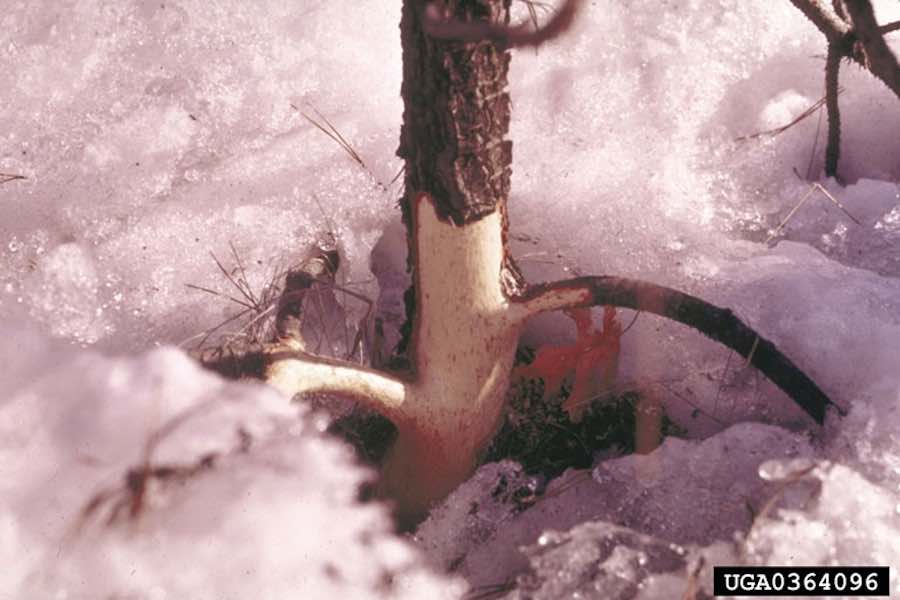Vole control for your lawn and landscape
Published at
Commonly found throughout Idaho, the meadow vole can cause significant problems to lawns and landscapes.
Meadow voles are small, chunky, ground-dwelling rodents. When mature, they measure 4½ to 5½ inches long including their tail. Voles are active year-round, and once the snow flies, damage may not be noticed until the spring thaw.
These pests feed on roots, stems, grass, seeds and underground reproductive structures like bulbs and tubers. They damage and kill trees by girdling or removing the bark from the trunk or stem near the base. In lawns, they create a network of shallow tunnels or runways leaving behind gnawed stems, bark and roots.
Vole populations are cyclical, meaning they have minor population peaks every four to six years and epidemic population explosions every 10 to 12 years. These cycles are not predictable and usually can’t be interrupted through disease unless the diseased population is extremely dense.
A vole’s lifespan lasts two to 16 months. Voles reproduce year-round, having one to five liters a year, with litter sizes ranging from one to 11 — but usually three to six — young. Their gestation period is 21 days. They will wean their young at 21-days-old, and females can become sexually mature at 35 to 40 days.
What can you do if you have a vole problem?

The most important thing to do is routinely monitor your property for signs of vole damage. Eliminate their habitat by mowing consistently and clearing weeds and debris from windbreaks and other affected areas.
Prevent voles from accessing trees, shrubs and flowerbeds by surrounding plants with 3/8-inch netted wire installed six inches below the soil surface and six inches above ground. Aluminum flashing or other materials can also serve as entry barriers.
Wooden traps can also help to reduce vole damage. Place them flush with the ground and at right angles to surface runways. Stake them to the ground to prevent predators from dragging the traps away. Set the traps with peanut butter, oatmeal or apple slices. Check them daily and bury any dead voles. Place traps where children and small pets cannot reach them.
There are two options for hand-baiting voles with chemicals. Both options are toxic to children, pets and non-target animals, so special precautions must be used.

One precaution is to use bait stations, an enclosed feeding device that is placed in runways or next to burrows so voles will find them while traveling their normal routes. In addition, using fresh bait and pre-baiting with non-toxic bait that is similar to toxic bait can increase your chances of success. When using chemicals, always read and follow label instructions.
Zinc phosphide is one option. Zinc phosphide is a restricted-use chemical, meaning only a certified applicator can purchase and use it. Zinc phosphide is fast-acting, can be used throughout early spring to late fall and must be placed in a bait station. Moisture activates the chemical, rendering it ineffective, so do not apply when moisture is anticipated and do not let it get wet.
Anticoagulant chemical baits are also available. These baits mix grain or other food sources with the active ingredient to attract the voles. They are usually pelleted or in block form. Multiple feedings are usually required to be lethal. These baits must be placed underground in the entry hole or a bait station.

In the Garden is sponsored by ProPeat, which is dedicated to delivering solutions for any of your professional fertilization needs. Whether you need to reduce the harm to soils and the environment, or you're interested in the latest nitrogen, carbon and biochemical technologies, ProPeat is the perfect fit.


